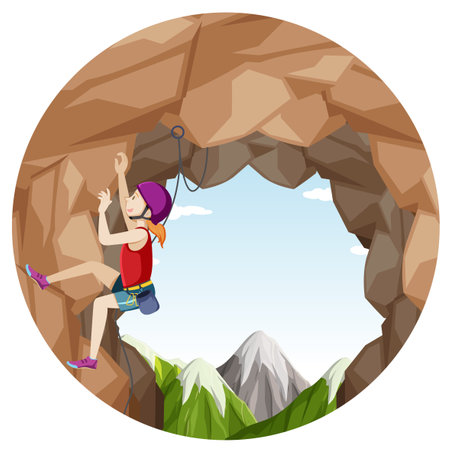1. Understanding the Unique Nutritional Needs of American Hikers
How America’s Diverse Trails Impact Your Nutrition
Hiking in the United States is as varied as the country itself. From the dry deserts of the Southwest to the lush forests of the Pacific Northwest, every region presents different challenges for hikers. Understanding how these environments affect your nutritional needs is key to staying energized and healthy on the trail.
Caloric Demands by Terrain
The amount of energy you burn on a hike depends greatly on where you’re hiking. For example, steep climbs in the Rocky Mountains can demand far more calories than flat trails in the Midwest. Here’s a quick look at estimated caloric burn for different terrains:
| Region | Terrain Type | Estimated Calories Burned per Hour* |
|---|---|---|
| Rocky Mountains | Steep/Elevated Trails | 500-700 kcal |
| Appalachian Trail | Rolling Hills/Mixed Forest | 400-600 kcal |
| Southwest (e.g., Grand Canyon) | Desert/High Heat | 550-750 kcal |
| Pacific Northwest | Mossy/Rainy Woodlands | 450-650 kcal |
| Midwest Plains | Flat/Open Fields | 350-500 kcal |
*Values are approximate and depend on personal factors like weight, speed, and pack load.
The Importance of Hydration: More Than Just Water
No matter where you hike in America, hydration is crucial—but your needs change with the environment. In dry regions like Arizona or Utah, water loss through sweat happens quickly and you may also need extra electrolytes. In humid climates such as those found along the Appalachian Trail, sweating may be less obvious but dehydration can sneak up just as fast. Carrying a reusable water bottle or hydration bladder is standard practice among U.S. hikers, and many trails offer water refill stations or natural sources (always filter or purify before drinking).
Energy Needs: Adapting Your Snacks to the Trail
Packing snacks that match your energy requirements is important for both safety and enjoyment. For hikes in higher altitudes like Colorado’s Rockies, high-calorie foods such as nut butters, trail mix, and jerky are popular choices among American hikers. In hot southern states, lighter snacks—dried fruits, granola bars—are preferred since heavy foods can feel uncomfortable in intense heat.
Quick Reference: Regional Nutrition Tips for American Hikers
| Region/Trail Type | Main Challenge | Nutritional Focus |
|---|---|---|
| Rockies (High Altitude) | Steep climbs, thin air | High-calorie snacks, extra hydration, iron-rich foods for altitude adaptation |
| Appalachians (Humidity) | Muggy weather, long distances between resupplies | Sodium/electrolyte-rich foods, frequent water intake, easy-to-carry carbs like bagels or tortillas |
| Southwest Deserts (Heat) | Drought conditions, extreme sun exposure | Sunscreen, salty snacks to replace minerals lost through sweat, 2+ liters of water per day minimum |
| Pacific Northwest (Wet Weather) | Dampness, slippery terrain | Dried fruits/nuts to avoid sogginess, waterproof food storage bags, hot drinks for warmth during breaks |
By paying attention to your specific trail’s demands—whether it’s altitude in Colorado or humidity in Georgia—you can fuel your adventure with exactly what your body needs to thrive on America’s incredible hiking trails.
2. Pre-Hike Preparation: Building a Solid Nutritional Foundation
Why Pre-Hike Nutrition Matters
Before you lace up your boots and hit the trail, it’s important to set yourself up for success with the right foods. Proper pre-hike nutrition gives your body the energy and stamina it needs for those miles ahead. In the U.S., many hikers rely on familiar, wholesome foods that are easy to prepare and packed with nutrients.
Planning Your Pre-Hike Meals
Think of your pre-hike meal as fueling up your car before a road trip. You want a mix of complex carbohydrates for lasting energy, lean protein for muscle support, and healthy fats for satiety. Here are some classic American foods and combinations perfect for the morning of your adventure:
| Food | Benefits | Why It Works for Hikers |
|---|---|---|
| Oatmeal with berries & nuts | Complex carbs, antioxidants, healthy fats | Sustained energy, easy to digest, portable |
| Peanut butter toast & banana | Carbs, potassium, protein, healthy fat | Boosts glycogen stores, helps prevent cramps |
| Greek yogurt parfait (granola & fruit) | Protein, probiotics, fiber, vitamins | Supports gut health and muscle recovery |
| Egg & cheese breakfast burrito (whole wheat) | Protein, complex carbs, calcium | Satisfying and provides steady fuel release |
| Cottage cheese & pineapple cup | Protein, vitamin C, calcium | Quick option with hydrating fruit content |
Snack Smart: What to Pack Before You Go
Packing snacks is just as important as your main meal. Trail mixes with nuts and dried fruits are American classics—easy to eat on-the-go and full of quick energy. Granola bars, beef jerky (or plant-based jerky), string cheese sticks, and apples or oranges are all great options for a pre-hike boost or quick bite at the trailhead.
Timing Your Nutrition for Maximum Endurance
The timing of your meals can make a big difference. Aim to eat your main pre-hike meal about 1–2 hours before you start hiking. This window allows enough time for digestion so you don’t feel sluggish but ensures you’re not running on empty. If you’re heading out early and can’t stomach a big meal first thing, go for something light (like a banana with peanut butter) and nibble on snacks as you warm up on the trail.
A Sample Pre-Hike Meal Plan (American Style)
| Time Before Hike | Meal/Snack Idea |
|---|---|
| 2 hours before hike | Bowl of oatmeal topped with walnuts and blueberries + glass of orange juice |
| 30 minutes before hike (if needed) | Granola bar or small apple with almond butter |
| Packed for trailhead arrival or early miles | Pouch of trail mix or a cheese stick + whole grain crackers |
The key is to listen to your body and choose foods that work best for you. With these simple tips and American-style favorites, you’ll be ready to tackle any trail with confidence!

3. On-Trail Fuel: Smart Snacking and Hydration Strategies
When you’re out on America’s vast hiking trails, keeping your energy up is key to a safe and enjoyable adventure. Choosing the right snacks and staying hydrated can make all the difference. Let’s explore how you can easily fuel up while on the move, using popular options that are lightweight, nutritious, and loved by hikers across the United States.
Top Trail Snacks for American Hikers
The best on-trail snacks are portable, non-perishable, and packed with energy. Here are some classic choices you’ll find in many U.S. hikers’ backpacks:
| Snack | Why It Works | Tips for Use |
|---|---|---|
| Jerky (Beef, Turkey, Vegan) | High in protein; satisfies hunger; doesn’t spoil quickly | Choose low-sodium options; break into bite-sized pieces before packing |
| Trail Mix | Mix of nuts, dried fruit, chocolate or seeds; provides carbs, fats, and protein | Customize your own blend to suit taste and dietary needs |
| Energy Bars/Granola Bars | Packed with calories and nutrients; easy to eat on the go | Look for bars with natural ingredients and avoid too much added sugar |
| Dried Fruit | Naturally sweet; provides quick carbs and vitamins | Pair with nuts for a balanced snack that keeps you fuller longer |
| Peanut Butter Packets | Rich in healthy fats and protein; very filling | Squeeze onto crackers or apple slices for a satisfying mini-meal |
| Tuna or Chicken Pouches | Ready-to-eat protein option; no refrigeration needed | Add to tortillas or eat straight from the pouch for lunch breaks |
Smart Hydration Strategies on the Trail
Staying hydrated is just as important as eating well. Dehydration can sneak up on you, especially in dry mountain air or during long treks. Here’s how to keep your fluid levels in check:
- Start Hydrated: Drink water before you hit the trail to build up reserves.
- Cary Enough Water: Bring more than you think youll need—aim for at least half a liter per hour of moderate activity in moderate temperatures.
- Use a Hydration Bladder: These hands-free water reservoirs fit inside most backpacks and make sipping while walking easy.
- Purification Options: If refilling from streams or lakes, pack water purification tablets or filters to stay safe.
- Add Electrolytes: Consider electrolyte drink mixes (like Nuun or Liquid I.V.) to replace minerals lost through sweat.
Packing Tips for Hassle-Free Snacking & Drinking
- Pre-portion snacks: Use small resealable bags to control portions and reduce waste.
- Avoid messy foods: Pick snacks that won’t melt or crumble easily in your pack.
- Pace yourself: Snack every 1–2 hours to maintain steady energy rather than waiting until you feel hungry.
Your Trail Nutrition Checklist
- A mix of quick carbs (dried fruit), healthy fats (nuts), and lean proteins (jerky)
- A reliable water system (bottle or bladder) plus purification method if needed
- A few electrolyte packets for long, hot hikes or high altitudes
The right snacks and smart hydration habits will help keep you energized from trailhead to summit. With these simple strategies, you’ll be prepared for whatever your American hiking adventure throws your way!
4. Post-Hike Recovery: Replenishing and Repairing
Why Recovery Nutrition Matters
Finishing a hike, especially on iconic American trails like the Pacific Crest or Appalachian Trail, feels amazing—but your body needs help to bounce back. Proper post-hike nutrition helps you refuel energy stores, repair muscle tissue, reduce soreness, and get ready for your next adventure. Skipping recovery can leave you tired, stiff, and slow to hit the trail again.
The Essentials of Post-Hike Nutrition
After hiking, your body craves a mix of carbohydrates, protein, and fluids. Here’s why each is important:
- Carbohydrates: Replenish lost glycogen (your muscles’ fuel).
- Protein: Repairs and builds tired muscles.
- Fluids & Electrolytes: Replace what you sweat out to prevent dehydration and cramping.
Timing Matters
Aim to eat within 30–60 minutes after finishing your hike. This is when your body absorbs nutrients best for recovery.
Favorite American Recovery Foods
Post-hike meals in the U.S. often blend classic favorites with practical nutrition. Here are some top picks hikers love:
| Food | Nutritional Benefit | Why Hikers Love It |
|---|---|---|
| Chocolate Milk | Carbs + Protein + Fluids | Tasty, easy to find at gas stations or trail towns |
| Turkey Sandwich | Lean protein + Whole grains + Veggies | Satisfying and portable; classic deli style |
| Greek Yogurt with Berries | High protein + Antioxidants + Carbs | Creamy, refreshing, easy to pack in a cooler |
| Trail Mix (nuts, dried fruit, chocolate) | Healthy fats + Protein + Quick carbs | No prep needed; customizable; great for on-the-go snacking |
| Burrito (beans, rice, lean meat) | Complex carbs + Protein + Fiber | Satisfies big appetites; easy to grab from local food trucks or diners near trails |
| Banana with Peanut Butter | Potassium + Carbs + Healthy fats | Packs well; balances electrolytes lost during sweating |
| Coconut Water or Sports Drinks | Electrolytes + Hydration | Cools you down fast; replaces lost salts quickly |
Quick Recovery Meal Ideas After a Hike
- Toss together a chicken wrap with greens and avocado for a balanced bite.
- Munch on apple slices dipped in almond butter while stretching out sore legs.
- If you’re near town, treat yourself to a veggie omelet with whole-grain toast.
- Add an electrolyte tablet to your water bottle if the day was especially hot or sweaty.
Hydration Tips for Fast Recovery
Your body can lose a lot of water on the trail. Drink plenty of fluids—aim for 16–24 ounces (about 500–700 ml) right after your hike. If your urine is dark yellow, keep sipping water until it runs lighter. For longer hikes in hot climates, consider drinks that replace sodium and potassium too.
Prepping for Your Next Adventure
The right recovery routine not only helps you feel better now but also sets you up for more miles ahead. Listen to your body: if you still feel wiped out the next day, focus on nutrient-rich meals and extra sleep before lacing up again. With smart post-hike nutrition and classic American recovery foods, you’ll be ready for whatever trail comes next!
5. Special Considerations: Dietary Preferences and Trail Safety
Hiking with Dietary Restrictions
Whether youre vegetarian, vegan, gluten-free, or managing food allergies, hitting the American trails shouldnt mean compromising your nutrition or enjoyment. Here are some tips to help you fuel up safely and comfortably:
| Dietary Preference | Trail-Friendly Food Ideas |
|---|---|
| Vegetarian | Dehydrated beans, lentils, whole grain tortillas, nut butters, dried fruits, cheese (if not vegan), trail mixes with seeds and nuts |
| Vegan | Vegan jerky, energy bars, freeze-dried veggies, quinoa packets, chickpea snacks, nut and seed butters, coconut milk powder |
| Gluten-Free | Rice cakes, gluten-free granola, instant mashed potatoes, jerky (check labels!), dried fruit and nut packs, gluten-free oatmeals |
| Allergy-Conscious | Homemade trail mix with known-safe ingredients, sunbutter (for nut allergies), allergy-friendly bars (read labels carefully), freeze-dried fruit/veggies |
Packing Tips for Specialized Diets
- Label everything: Keep ingredients lists handy in case of accidental sharing or questions from hiking buddies.
- Test foods at home: Don’t bring something new onto the trail—try it during training hikes to ensure it sits well with your stomach.
- Pack extra: Specialized foods may be harder to replace on the trail if lost or spoiled.
Trail Safety: Protecting Your Food from Critters and Bears
The U.S. is home to a variety of wildlife that would love a taste of your trail snacks! From squirrels and raccoons to black bears and grizzlies in certain regions, keeping your food secure is critical for both your safety and theirs.
Bearing Down: Storing Food Safely in Bear Country
- Bear Canisters: Required in many national parks; these hard-sided containers keep scents contained and prevent animals from accessing your food.
- Bear Bags: Lightweight sacks made of tough material like Ursack can be hung from trees (at least 12 feet high and 6 feet out from the trunk).
- Avoid scented items in your tent: Store all food, trash, and scented toiletries away from sleeping areas—ideally 100 feet downwind.
- No trace left behind: Always pack out all wrappers and scraps to avoid attracting critters to campsites.
Critter-Proofing Beyond Bears
- Use odor-proof bags: Even small animals like chipmunks can chew through regular plastic bags.
- Hang food when possible: If youre not in bear country but want to deter raccoons or mice, hanging food 6-8 feet off the ground helps.
- Choose campsite wisely: Avoid camping near animal trails or obvious wildlife activity zones.
Quick Reference Table: Wildlife Safety by Region
| Region/Trail Type | Main Wildlife Concern | Main Storage Recommendation |
|---|---|---|
| Sierra Nevada/Yellowstone/Appalachian Trail (North) | Bears (black/grizzly) | Bear canister required by law in many areas; hang bear bags if allowed; never leave food unattended. |
| Southeast U.S./Smokies/Ozarks | Bears (mostly black); raccoons/squirrels/mice | Bear hangs; sturdy odor-proof bags; store food away from shelter. |
| PCT/Desert Southwest/High Plains | Coyotes/ravens/small mammals more than bears | Tough stuff sacks or odor-proof bags; hang when possible; keep an eye out for opportunistic critters. |
If you take time to prepare foods that meet your dietary needs and follow local guidelines for safe food storage on America’s beautiful trails, you’ll be able to focus on what matters most—enjoying every step of your adventure!


